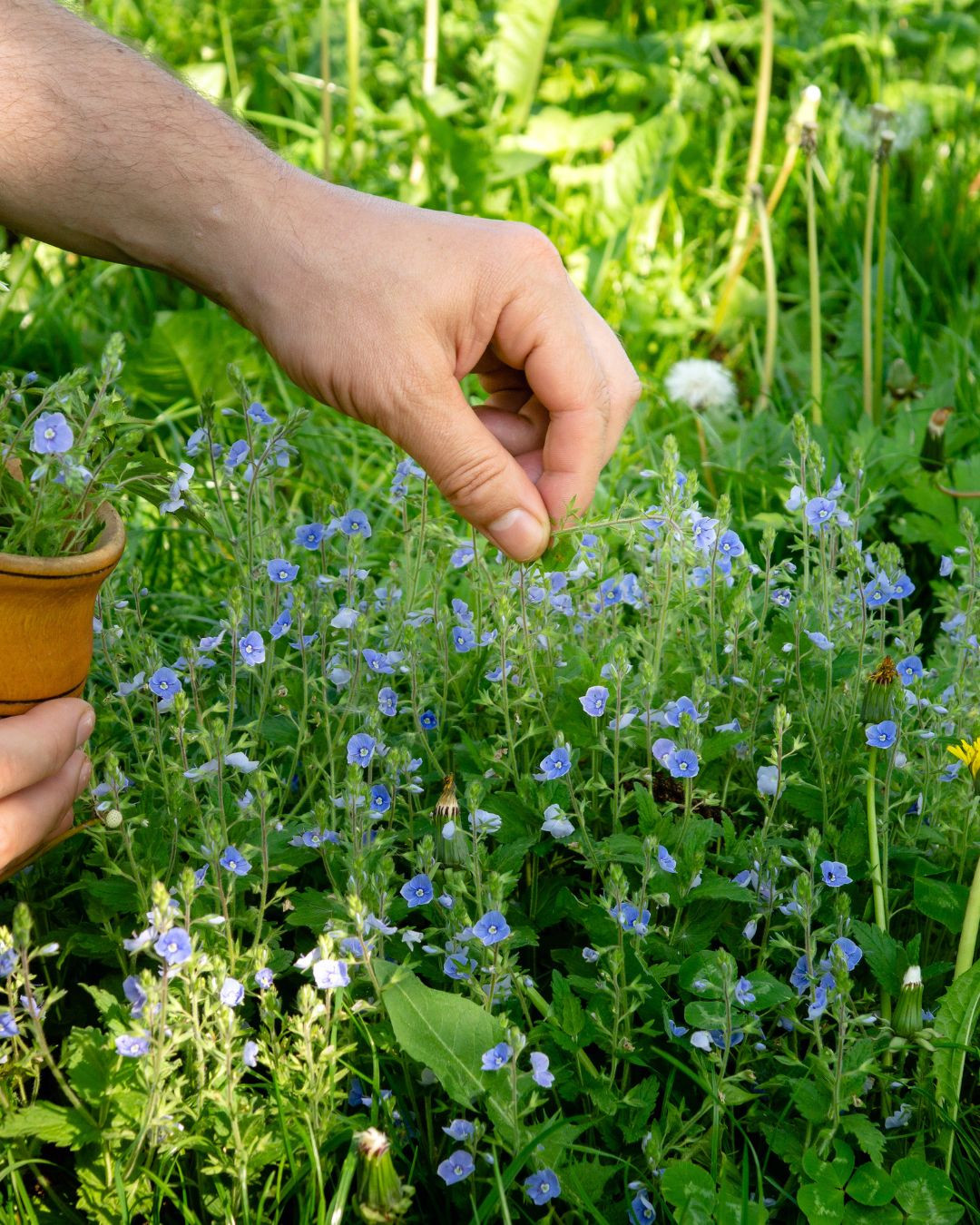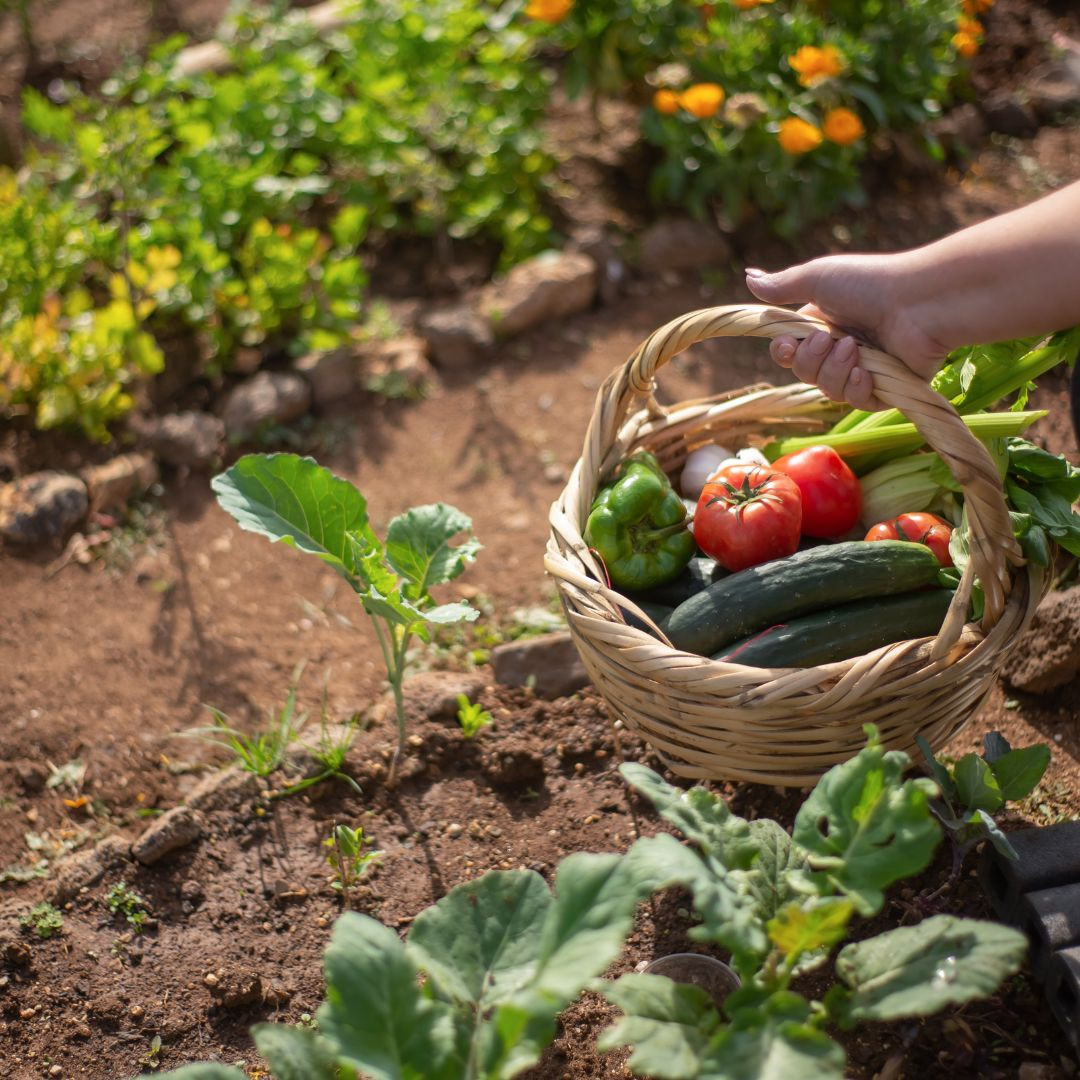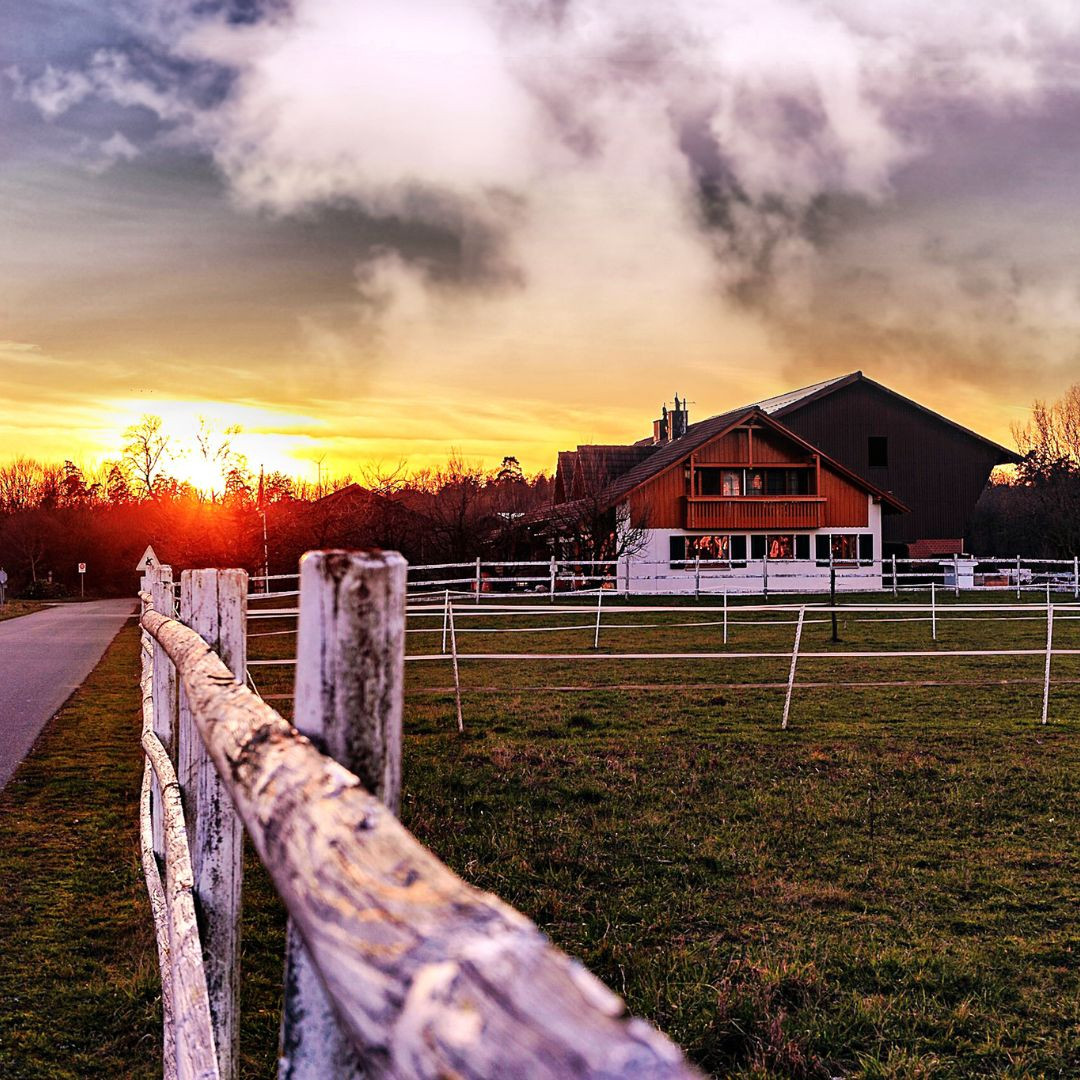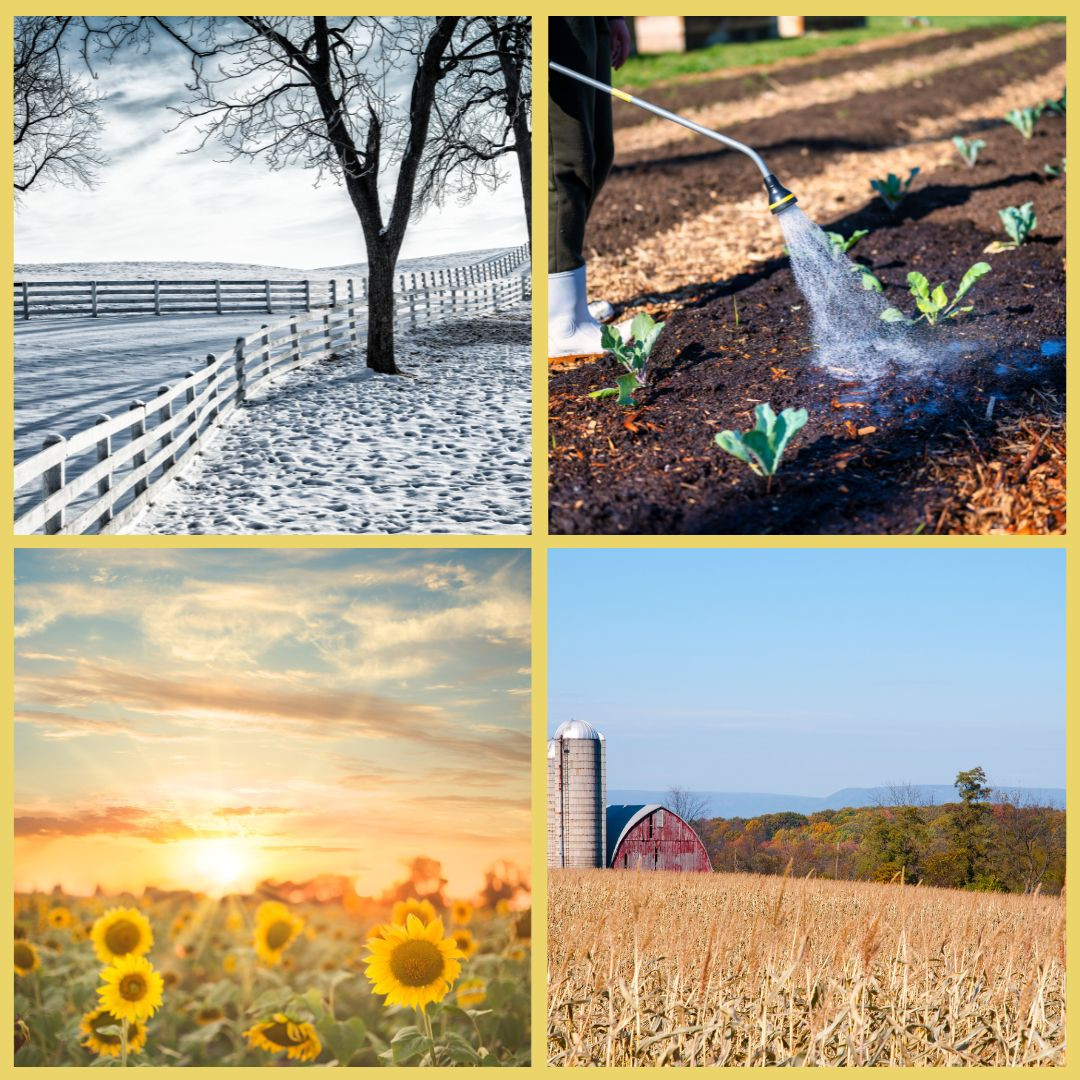
This post may contain affiliate links, which means that I may receive a commission if you make a purchase using these links, with NO additional cost to you.
Like any animal, sheep have a cost to them as well. Most livestock will have about the same cost, in differing amounts. A cow will eat more than a sheep for example, but they both require feed. The main difference lies in the potential income they produce.
Basic one-time costs (unless you break it or have a disaster), include shelter, waters, feed bunks or hay feeders, and fence. Now if you are blessed with abundant, year-round pasture, you may not need feed bunks or hay feeders.
Keep in mind barns and fences will require maintenance to keep them in functioning order. The older the structures, the more maintenance cost is typically involved. For ease of figures, just plan on a basic number per year. There will also be a cost involved in moving manure around if your animals are in smaller pen areas instead of pasture at any point. For more on fence design tips, check out the blog here.
What your hay or grain feeder is made from will determine how long it will last. Wooden feed bunks outside may only last 5-10 years before they completely fall apart. Kept inside, they will last longer. Metal will last longer 15-20 years even outside.
One unique cost to sheep that is NOT required is a working facility. For the most part, especially in a small flock, a simple panel in the barn or corner of the pen is all that is needed to treat the flock when needed. The fancy working facility is quite nice when you no longer have young backs to help you catch the ewes. That’s when my dad got his facility, when 3 of the 4 kids had left for college, 10 years after the first breeding ewes arrived on the farm.
Reoccurring expenses are ones that are happening every month or year. This includes maintenance costs, vaccinations/deworming/testing, rent (or mortgage payment), and feed.
Now for the income potential. Sheep are unique in their grazing as they will eat the broad leaf weeds first, before the grass. If you have portable fencing, you could use them as weeders for neighbors. Most pasture areas are not set up for sheep but cattle, which will not hold sheep.
If you are breeding sheep, you will have extra sheep at some point. There are only so many breeding animals you can have, so meat is a potential income. How much demand locally for this you have will depend greatly on your location. Be sure to factor in the ‘income’ even if you simply put them in your freezer. You no longer need to buy some other meat.
A more common market for extra lamb is to sell them to a local sale barn. The income from lamb sales will vairy depending on the time of year and the weight of the lambs. There is also the value of the ewe or ram when they are done with their useful breeding life.
Depending on the breed you have the potential for wool sales as well. Again, this will be more area dependent. But could be a good market if you are willing to do the work and connect with the hobby spinners.
The easiest way to see all the expenses and income together, is to lay out all the expenses on one side of a chart and the income on the other. Then total the numbers. Keep in mind one time cost should be spread out over the lifetime of the structure/equipment for accurate analysis.
Now get figuring and go buy some sheep!
As I've grown in my journey as an entrepreneur, mom, gardener, and livestock owner, I struggled to find a planner that met my needs and kept me organized. So, I MADE MY OWN. You can look at it on the link below and buy it on amazon below.
Don't want the whole calendar part? I got you! I pulled the gardening and animal care pages out and put them in a book all their own.
Wanting a community to lean into? Join the FREE Helping Your Family Homestead for Food group! This community is for the Mommas, looking to stay home and raise their kids, but unsure how to keep everyone fed and make ends meet. I share tips from my journey from the office to half the income and feeding my family from home, while maintaining good nourishing food. Tips include gardening, bulk buying, caning/preserving, livestock, homesteading, and home remedies. Your family is precious, and this group is to help you gain the knowledge and tools to keep your family well and not reliant on outside professionals. Remedies and tips are easy and simple for the busy momma, time is precious after all, including pregnancy, birth, young kids, and illness. Trust your Momma gut again! This community offers the resources + community you need to help get started on your journey and prepare for whatever future you envision.
Starting to garden doesn't have to be hard! I gathered all the tips I've learned over my gardening learning curve and made them into a simple course to jump start your gardening your life.
Supporting Your Family Naturally from the Inside Out community!! This community is for Mommas, looking to Support Your Family from Nature for Wellness. Tips range from nutrition, herbals, detoxing, natural cleaning, and essential oils. Basically, all the things I’ve learned slowly over the past 5+ years of my journey. We have moved off Facebook, to better serve our community and be able to discuss openly options for providing for your family in the best way possible.
Join the FREE Community
Join the FREE Community
I've had 3 very different pregnancies. After the first traumatic birth, I learned better and how to care for my body naturally and prevent common pregnancy and birth problems before they arise. This quick course will get you the tools you need to have a naturally healthy pregnancy, labor, and delivery. My first pregnancy I had a normal western medicine all the things pregnancy. My second? I flipped to completely natural, no medicine. Bonus: Preventing Preeclampsia Without the Aspirin & Healing from Birth Trauma
For more on wellness tips click here:
For more on homesteading on your budget click here:
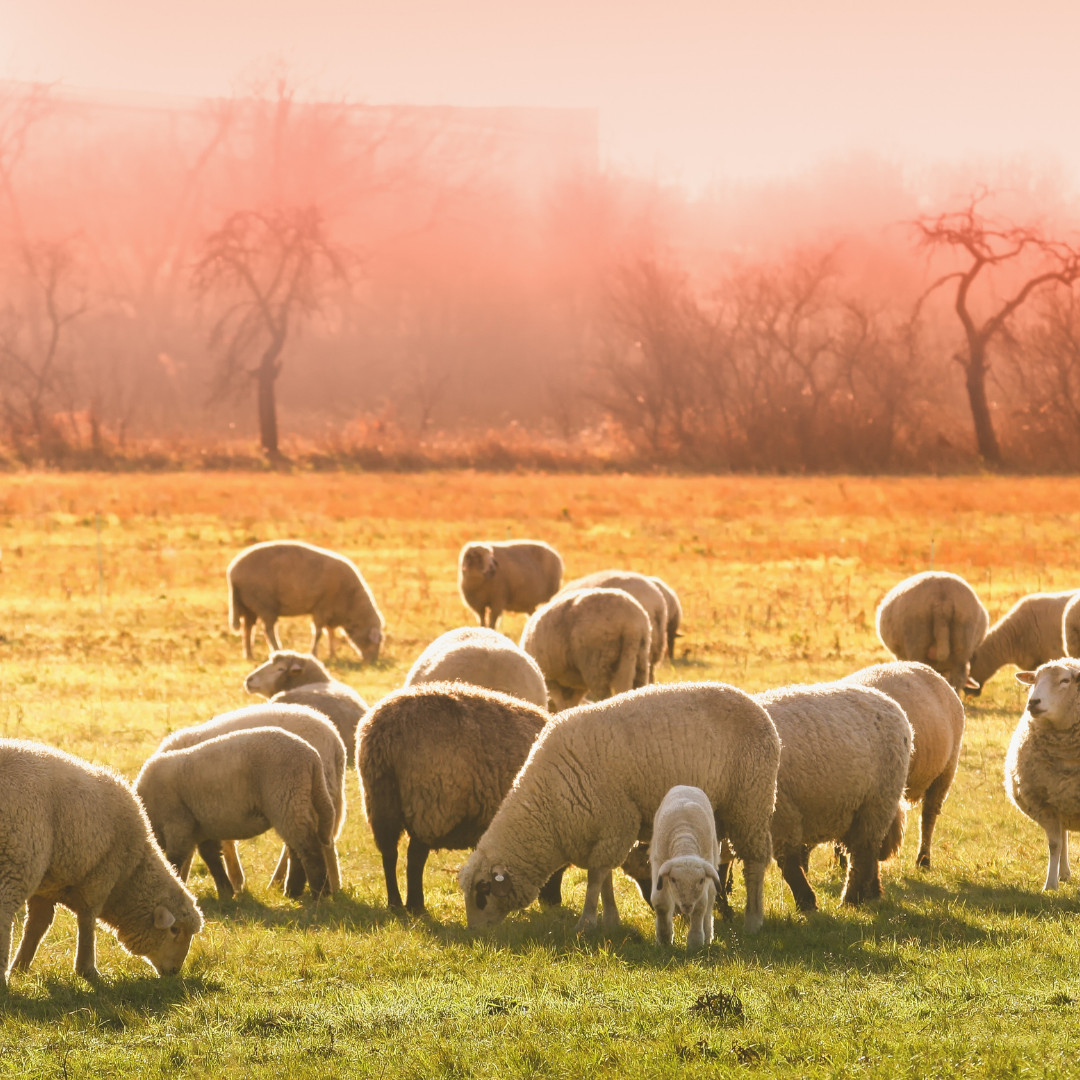
This post may contain affiliate links, which means that I may receive a commission if you make a purchase using these links, with NO additional cost to you.
Sheep are so fun to have around. They’re cute and fluffy and full of curiosity. However, there are a few things that turn people away from sheep. The old saying “Sheep are born looking for a way to die” being the main one that comes to mind. Truth is that many times sheep are just fine.
What people don’t see is the slight change in behavior when a sheep is getting sick. They seem fine and then they are dead. This is because sheep are a very vulnerable prey animal. If you look sick, as a sheep, you are a coyote’s lunch. Thus, they hide sickness very well. With that in mind here’s a few things to look for.
As you walk through your herd, look at those on the outside, not right next to you. A sheep that is not feeling well, will have their head down, ears drooping, and eyes dull. There is a catch all phrase for this “Ain’t Doing Right” or ADR for short. Watch from a distance to see how they act. As you approach, they will probably perk up and run off pretending to be ok. As soon as they are a ‘safe’ distance away, they will resume the ADR behavior. These sheep need to be separated and further evaluated for illness signs, such as fever, parasite load, pneumonia.
Lameness is much easier to evaluate. Sheep can’t hide a lame/sore limb very well, though some can still run quite fast on three legs. Once you have caught the lame sheep there are a few common reasons to evaluate for: blocked long toes, blocked pore, and foot rot. The following is how to differentiate and treat each.
Long toes are pretty easy to pick out as you look at the sheep in the pen. The hoof will be overgrown and the sheep not walking upright anymore. When they are long enough to cause the sheep to be lame, the hoof will be rolled under far enough to poke/rub the other toe or look like a pointy nail sticking out the front of the hoof.
You will need to catch such a sheep and trim their hooves. If the hoof is really overgrown, it may take a couple trims, days in a row to properly trim the hoof, without crippling the sheep.
If the toes look ok, the next to check is for a blocked pore. For a blocked pore, simply pick up the lame leg and look at the front of the hoof. Just above the hoof in the hair, you will see a pore. Occasionally these become blocked, kind of like a blocked tear duct. Simply pick the crud away and the pore should open and the sheep feel better quickly.
If the toes and pore looks fine, the next thing to check for is Foot rot. Again, pick up the lame foot and look at the underside. A foot with foot rot will have an awful odor, maybe slight green tint, be squishy and oozing/bleeding.
To treat foot rot, clean the debris foot out and soak in an Epson salt foot soak, if possible, for 5-10 minutes. This can be difficult at first, as sheep don’t tend to like to stand, and you must have a chute or panels to hold them still with. Then you will want to cover the hoof in a foot rot solution, but NOT Kopertox. Kopertox is a popular treatment but can cause copper toxicity in sheep. Look for something with zinc sulphate or formalin. Allow it to dry before returning to the pen. Sever cases will require antibiotics, such as LA 200.
If a good portion of the herd is affected, you may need to set up a foot bath and run the entire herd through every week until they clear up.
Learning to recognize what is abnormal for your herd is key to keeping your sheep healthy. The more time you spend with your sheep the more you will be able to quickly recognize problem before it becomes serious.
As I've grown in my journey as an entrepreneur, mom, gardener, and livestock owner, I struggled to find a planner that met my needs and kept me organized. So, I MADE MY OWN. You can look at it on the link below and buy it on amazon below.
Don't want the whole calendar part? I got you! I pulled the gardening and animal care pages out and put them in a book all their own.
Wanting a community to lean into? Join the FREE Helping Your Family Homestead for Food group! This community is for the Mommas, looking to stay home and raise their kids, but unsure how to keep everyone fed and make ends meet. I share tips from my journey from the office to half the income and feeding my family from home, while maintaining good nourishing food. Tips include gardening, bulk buying, caning/preserving, livestock, homesteading, and home remedies. Your family is precious, and this group is to help you gain the knowledge and tools to keep your family well and not reliant on outside professionals. Remedies and tips are easy and simple for the busy momma, time is precious after all, including pregnancy, birth, young kids, and illness. Trust your Momma gut again! This community offers the resources + community you need to help get started on your journey and prepare for whatever future you envision.
Starting to garden doesn't have to be hard! I gathered all the tips I've learned over my gardening learning curve and made them into a simple course to jump start your gardening your life.
Supporting Your Family Naturally from the Inside Out community!! This community is for Mommas, looking to Support Your Family from Nature for Wellness. Tips range from nutrition, herbals, detoxing, natural cleaning, and essential oils. Basically, all the things I’ve learned slowly over the past 5+ years of my journey. We have moved off Facebook, to better serve our community and be able to discuss openly options for providing for your family in the best way possible.
Join the FREE Community
Join the FREE Community
I've had 3 very different pregnancies. After the first traumatic birth, I learned better and how to care for my body naturally and prevent common pregnancy and birth problems before they arise. This quick course will get you the tools you need to have a naturally healthy pregnancy, labor, and delivery. My first pregnancy I had a normal western medicine all the things pregnancy. My second? I flipped to completely natural, no medicine. Bonus: Preventing Preeclampsia Without the Aspirin & Healing from Birth Trauma
Click here to get the stories straight to your email:
For more on wellness tips click here:
For more on homesteading on your budget click here:
For more simple DIY updates click here:
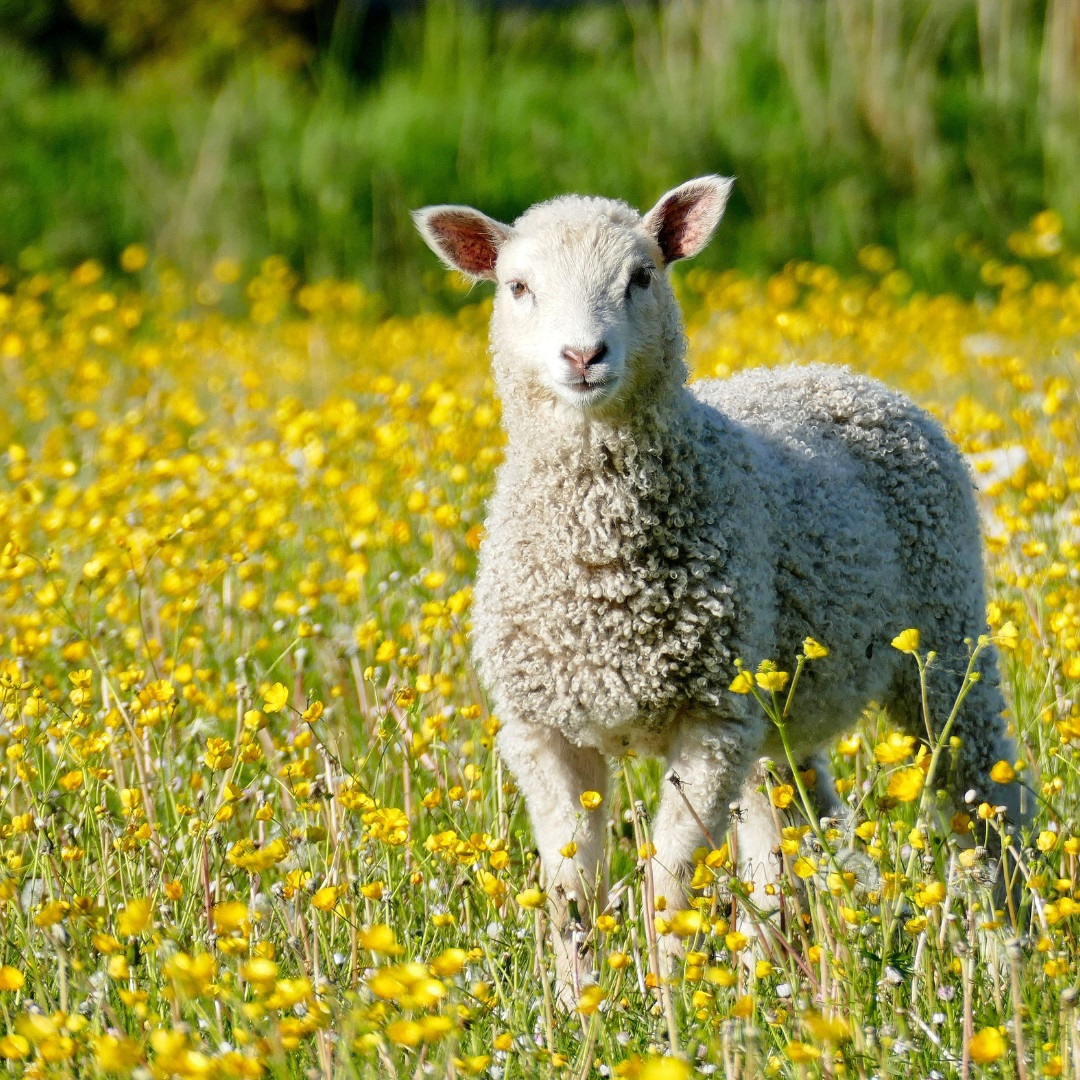
This post may contain affiliate links, which means that I may receive a commission if you make a purchase using these links, with NO additional cost to you.
When selecting a sheep breed for your homestead, it is important to consider what you want sheep for. Are you looking for them to fill your freezer or cloth your family, or both? Keep reading for the favorite breeds for each category.
First, keep in mind that sheep are browsers. This means they are going to naturally select the broadleaf weeds above the grass and woody plants. If you have a weedy area, sheep will love it.
Meat breeds of sheep are sheep that do not have high quality wool. They still grow wool, but the wool tends to be coarse and not soft. These breeds are good at growing muscle and tend to be bigger boned. Popular breeds for this are the Suffolk (my personal favorite), Hampshire, Katahdin, and Doper. Suffolk and Hampshire will produce a bigger carcass. Katahdin and Doper breeds are smaller, but more popular because of their easy care and smaller frame. Katahdin’s are famous for their ability to shed their wool coat in the spring.
Wool breeds of sheep may not have the best growing meat, but have outstanding soft, and fine wool coats. The most popular breed for wool is the Merino. Other popular breeds are the Romanoff, Romney, Lincoln, and Leicester Longwool. These breeds will grow a long wool fleece every year and need sheered. That fleece will be soft and great for spinning and making cloths with.
Dual purpose breeds have a little bit of both categories. They may not be the best in either category, but they tend to have the best blend of both. Top breeds for dual purpose, are the Rambouillet, Dorset, and Corriedale. These breeds tend to grow a good amount of muscle, but still have a decently soft fleece.
Some breeds are more prone to multiple lambs, some are more resistant to parasites, some have a reputation for being smarter or more hardy, some more tolerant to heat or cold. Every breed has its perks and downfalls. It is important to research each breed to make sure they will match your environment and needs.
As I've grown in my journey as an entrepreneur, mom, gardener, and livestock owner, I struggled to find a planner that met my needs and kept me organized. So, I MADE MY OWN. You can take a look at it on the link blow and buy it on amazon below:
Don't want the whole calendar part? I got you! I pulled the gardening and animal care pages out and put them in a book all their own.
Wanting a community to lean into? Join the FREE Helping Your Family Homestead for Food group! This community is for the Mommas, looking to stay home and raise their kids, but unsure how to keep everyone fed and make ends meet. I share tips from my journey from the office, to half the income and feeding my family from home, while maintaining good nourishing food. Tips include: gardening, bulk buying, caning,/preserving, livestock, homesteading, and home remedies. Your family is precious and this group is to help you gain the knowledge and tools to keep your family well and not reliant on outside professionals. Remedies and tips are easy and simple for the busy momma, time is precious after all, including pregnancy, birth, young kids, and illness. Trust your Momma gut again! This community offers the resources + community you need to help get started on your journey and prepare for whatever future you envision.
Starting to garden doesn't have to be hard! I gathered all the tips I've learned over my gardening learning curve and made them into a simple course to jump start your gardening your life.
Supporting Your Family Naturally From the Inside Out community!! This community is for the Mommas, looking to Support Your Family from Nature for Wellness. Tips range from nutrition, herbals, detoxing, natural cleaning, and essential oils. Basically all the things I’ve learned slowly over the past 5+ years if my journey. We have moved off Facebook, so to better serve our community and be able to discuss openly option for providing for your family in the best way possible.
Join the FREE Community
Join the FREE Community
I've had 3 very different pregnancies. After the first traumatic birth, I learned better and how to care for my body naturally and prevent common pregnancy and birth problems before they arise. This quick course will get you the tools you need to have a naturally healthy pregnancy, labor, and delivery. My first pregnancy I had a normal western medicine all the things pregnancy. My second? I flipped to completely natural, no medicine. Bonus: Preventing Preeclampsia Without the Aspirin & Healing from Birth Trauma
Click here to get the stories straight to your email:
For more on wellness tips click here:
For more on homesteading on your budget click here:
For more simple DIY updates click here:
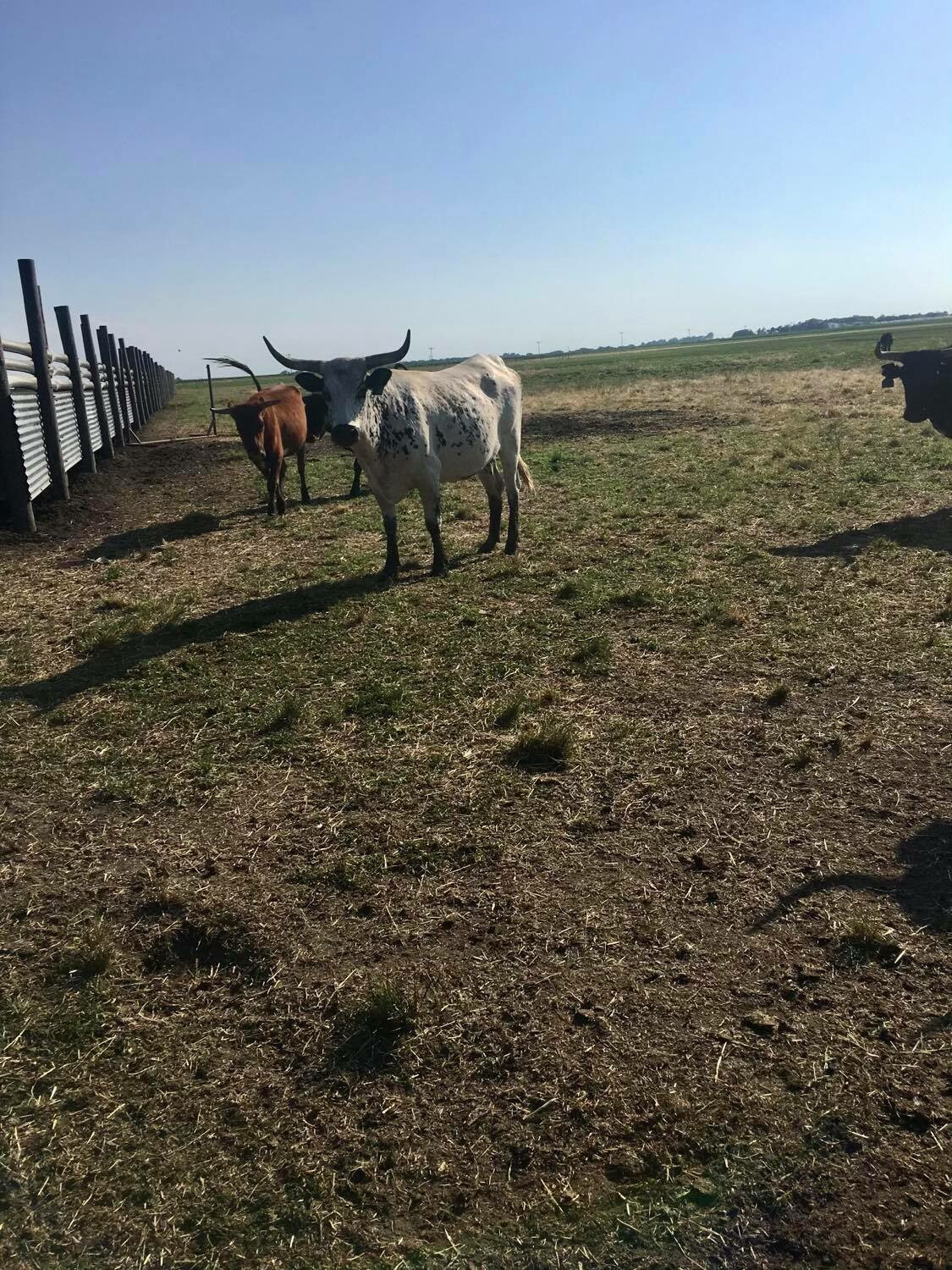
This post may contain affiliate links, which means that I may receive a commission if you make a purchase using these links, with NO additional cost to you.
Training livestock, cattle, sheep, pigs, goats, etc., for basic movement is actually fairly simple. There are a few things to consider keeping you safe and make the training simple for everyone.
First, safety. When working with any livestock it is best to wear closed toes shoes. The larger the animal, the more important your shoes are. When working with larger animals, like cows, you definitely want to invest in leather boots.
Next your biggest training tools. A bucket, some grain for starters, and repetition. Food is a very good motivator for animals. You will have to let them get their head in the bucket at least the first time, or pour the grain out for them, until they figure out the bucket means food. Once they make the connections, you can lead them about anywhere. You can also use a few rocks in a bucket in a pinch once they figure it out. Disclaimer this method works well with small groups. You get large groups of 20+ and it’s not the best method.
You can also train animals to move easily from pasture to pasture. Repetition is key here. The reward, food, is on the next side of the gate. When you move a large herd the same way every time, they quickly figure out what the ques are and often meet you at the gate.
Story time. Before I was at home with my kids, I worked with large herds of cattle, 100 was a small a group typically. Most of the time moving the group to the next pasture across the fence would be done with 1 person. We all moved them the same, with the same pattern, and call. When calves were in the group, we drove through the herd, from the gate, and made sure everyone was up. Hooked up the salt/mineral sled and slowly drove back through the herd calling for them. They quickly followed, knowing new grass was coming. By weaning even, the calves would come to a simple call, because they had been conditioned that new food was coming.
In summary, repetition is key when training animals. Their easy reward is food. Whatever you choose to use as your moving method, do it the same every time and they will quickly be moving without much effort.
As I've grown in my journey as an entrepreneur, mom, gardener, and livestock owner, I struggled to find a planner that met my needs and kept me organized. So I MADE MY OWN. You can take a look at it on the link blow and buy it on amazon below
Don't want the whole calendar part? I got you! I pulled the gardening and animal care pages out and put them in a book all their own.
Wanting a community to lean into? Join the FREE Helping Your Family Homestead for Food group! This community is for the Mommas, looking to stay home and raise their kids, but unsure how to keep everyone fed and make ends meet. I share tips from my journey from the office, to half the income and feeding my family from home, while maintaining good nourishing food. Tips include: gardening, bulk buying, caning,/preserving, livestock, homesteading, and home remedies. Your family is precious and this group is to help you gain the knowledge and tools to keep your family well and not reliant on outside professionals. Remedies and tips are easy and simple for the busy momma, time is precious after all, including pregnancy, birth, young kids, and illness. Trust your Momma gut again! This community offers the resources + community you need to help get started on your journey and prepare for whatever future you envision.
Starting to garden doesn't have to be hard! I gathered all the tips I've learned over my gardening learning curve and made them into a simple course to jump start your gardening your life.
Supporting Your Family Naturally From the Inside Out community!! This community is for the Mommas, looking to Support Your Family from Nature for Wellness. Tips range from nutrition, herbals, detoxing, natural cleaning, and essential oils. Basically all the things I’ve learned slowly over the past 5+ years if my journey. We have moved off Facebook, so to better serve our community and be able to discuss openly option for providing for your family in the best way possible.
Join the FREE Community
Join the FREE Community
I've had 3 very different pregnancies. After the first traumatic birth, I learned better and how to care for my body naturally and prevent common pregnancy and birth problems before they arise. This quick course will get you the tools you need to have a naturally healthy pregnancy, labor, and delivery. My first pregnancy I had a normal western medicine all the things pregnancy. My second? I flipped to completely natural, no medicine. Bonus: Preventing Preeclampsia Without the Aspirin & Healing from Birth Trauma
Click here to get the stories straight to your email:
For more on wellness tips click here:
For more on homesteading on your budget click here:
For more simple DIY updates click here:

This post may contain affiliate links, which means that I may receive a commission if you make a purchase using these links, with NO additional cost to you.
The basics of a pen is to contain animals to a specific area for management or safety. This can give you a lot of freedom to design with resources you have to meet your and your animals’ needs. There are a few design differences to keep in mind for horses, cattle, and sheep/goats.
If you have access to a power source (solar, battery, plug in), electric fence can be an option for most livestock. Horses and cows will respect a single strand hot wire, calves will need a second or third. Sheep will need 4 wires, with 2 hot. Electric fence also gives you the flexibility of easily moving or rotating pastures. Keep in mind, if the fence goes dead, animals have an amazing ability to know when it’s no longer on and will let themselves out. Electric fence is a great option for open grazing space. It does not work well for close corridors/high pressure areas.
For sheep, cattle panels work well. I have tried woven wire before, and it just doesn’t hold up to ewes trying to climb the fence and heads get caught too easily in the squares. Hog panels may work for sort breeds, but most of the time they are too short, and the sheep will jump out. Keep in mind for sheep you need some kind of predator deterrent or protection. The cattle panels are tall enough to deter many predators looking for an easy meal, but a determined one will search for openings. That is where a livestock guardian animal (dog, donkey, llama, etc.) comes in.
For horses in a confined area, cattle panels will work for the short term, but they will start to reach over and bend the panels if there isn’t something sturdier. You can put an electric wire across the top to keep them from leaning on the fence. Across the front of my fence, I have 4 rails of 2x6 boards. This is a very sturdy fence, but it has the hay and feed on the other side, so a sturdy fence is needed there. The other 3 sides are 4 strand smooth wire, with 2 hot. This gives me the ability for bottle calves to run there if needed.
Cattle in high pressure areas need something even sturdier. If you are only running a few head, you could get by with a simple cattle panel pen. If you are raising and moving many cattle through a chute system, you will need strong fencing, pipe is the most common as it can handle the pressure of large herds pushing on it while moving along.
Your fencing needs will depend on how much pressure your fence is under. The more pressure, the sturdier your fence will need to be. Increase pressure comes from an increase in the number of animals or a decrease in total space or a combination. Keep in mind the goal and function of your fence (open grazing or protecting from extra feed). Then take your needs, space available, with the my tips and start designing!
As I've grown in my journey as an entrepreneur, mom, gardener, and livestock owner, I struggled to find a planner that met my needs and kept me organized. So I MADE MY OWN. You can take a look at it on the link blow and buy it on amazon below
Don't want the whole calendar part? I got you! I pulled the gardening and animal care pages out and put them in a book all their own.
Wanting a community to lean into? Join the FREE Helping Your Family Homestead for Food group! This community is for the Mommas, looking to stay home and raise their kids, but unsure how to keep everyone fed and make ends meet. I share tips from my journey from the office, to half the income and feeding my family from home, while maintaining good nourishing food. Tips include: gardening, bulk buying, caning,/preserving, livestock, homesteading, and home remedies. Your family is precious and this group is to help you gain the knowledge and tools to keep your family well and not reliant on outside professionals. Remedies and tips are easy and simple for the busy momma, time is precious after all, including pregnancy, birth, young kids, and illness. Trust your Momma gut again! This community offers the resources + community you need to help get started on your journey and prepare for whatever future you envision.
Starting to garden doesn't have to be hard! I gathered all the tips I've learned over my gardening learning curve and made them into a simple course to jump start your gardening your life.
Supporting Your Family Naturally From the Inside Out community!! This community is for the Mommas, looking to Support Your Family from Nature for Wellness. Tips range from nutrition, herbals, detoxing, natural cleaning, and essential oils. Basically all the things I’ve learned slowly over the past 5+ years if my journey. We have moved off Facebook, so to better serve our community and be able to discuss openly option for providing for your family in the best way possible.
Join the FREE Community
Join the FREE Community
I've had 3 very different pregnancies. After the first traumatic birth, I learned better and how to care for my body naturally and prevent common pregnancy and birth problems before they arise. This quick course will get you the tools you need to have a naturally healthy pregnancy, labor, and delivery. My first pregnancy I had a normal western medicine all the things pregnancy. My second? I flipped to completely natural, no medicine. Bonus: Preventing Preeclampsia Without the Aspirin & Healing from Birth Trauma
Click here to get the stories straight to your email:
For more on wellness tips click here:
For more on homesteading on your budget click here:
For more simple DIY updates click here:

This post may contain affiliate links, which means that I may receive a commission if you make a purchase using these links, with NO additional cost to you.
Feeding sheep isn’t really complicated. There are a few key things to keep in mind though. Buckle up were going to fly through 20 years of sheep feeding experience in 492 words. If you want more details, join my free group linked below. Let’s go!
First if you’re grazing sheep, keep in mind they prefer broad leaf weeds over grass. Perfect for chemical free pasture weeding. You will however need to have some kind of predator proofing. Sheep are favorite meals for several large predators, like coyotes. We’ll talk more on fencing in a later blog. Another good option is to run some kind of livestock guarding, either a dog, donkey, llama, or combination are the most popular for sheep. Dividing the pasture into small areas or paddocks and then moving them every 2-3 days, best utilize the pasture.
Forage is key for sheep as they are ruminants. Keep in mind when feeding any ruminant, or really any animal (human included), you are actually feeding the bacteria in the gut first. The bacteria then produce much of the nutrients, in the form of volatile fatty acids, in the rumen. The partly digested food, then passes through the rest of the digestive tract, where it is broken down into absorbable compounds.
If you do not have safe pasture for sheep, not all is lost. You can keep sheep in a dry lot. You will need to have forage, usually grass or alfalfa hay. They will need supplements for vitamins and minerals, as those may be lacking in dried hay. One thing with minerals for sheep is you must feed sheep only mineral. Sheep are very easily to give too much copper and become toxic.
Just prior to breeding season it is helpful to give the ewes some grain, such as corn. The nutrient boost helps to prepare them for breeding and ovulate more eggs, giving a greater percentage of twins. You could do this with pasture as well, by giving them access to new growth pasture, which tends to be higher in nutrients.
Sheep are also expert sorters. If you are unsure of what they are eating, watch them for a little bit and you will quickly see what they sort out. Be careful to give adequate nutrition during pregnancy, but not excessive. To many nutrients you will have very big lambs and need to pull or assist in birth. To few nutrients, you will have weak lambs. Sorting ewes by how many lambs they are carrying can be helpful, but not necessary.
After lambing, ewes will need supplementing if you are lambing in the winter months. Ewes have high nutrient requirements as they are lactating. As weaning approaches, you can decrease the grain to help the ewes naturally dry up. In a dry lot setting, make sure you have a creep area for the lambs to have access to grain formulated for their growing bodies. They will eat hay with their mom (alfalfa is best during lactation).
Remember, sheep need forage first. Pasture is ideal, but you can match hay with seasons and ewe cycle, supplementing with grain as needed. Always have access to clean water, that the smallest lamb in the pen can reach, as well.
As I've grown in my journey as an entrepreneur, mom, gardener, and livestock owner, I struggled to find a planner that met my needs and kept me organized. So, I MADE MY OWN. You can take a look at it on the link blow and buy it on amazon below:
Don't want the whole calendar part? I got you! I pulled the gardening and animal care pages out and put them in a book all their own.
Wanting a community to lean into? Join the FREE Helping Your Family Homestead for Food group! This community is for the Mommas, looking to stay home and raise their kids, but unsure how to keep everyone fed and make ends meet. I share tips from my journey from the office, to half the income and feeding my family from home, while maintaining good nourishing food. Tips include: gardening, bulk buying, caning,/preserving, livestock, homesteading, and home remedies. Your family is precious and this group is to help you gain the knowledge and tools to keep your family well and not reliant on outside professionals. Remedies and tips are easy and simple for the busy momma, time is precious after all, including pregnancy, birth, young kids, and illness. Trust your Momma gut again! This community offers the resources + community you need to help get started on your journey and prepare for whatever future you envision.
Starting to garden doesn't have to be hard! I gathered all the tips I've learned over my gardening learning curve and made them into a simple course to jump start your gardening your life.
Supporting Your Family Naturally From the Inside Out community!! This community is for the Mommas, looking to Support Your Family from Nature for Wellness. Tips range from nutrition, herbals, detoxing, natural cleaning, and essential oils. Basically all the things I’ve learned slowly over the past 5+ years if my journey. We have moved off Facebook, so to better serve our community and be able to discuss openly option for providing for your family in the best way possible.
Join the FREE Community
Join the FREE Community
I've had 3 very different pregnancies. After the first traumatic birth, I learned better and how to care for my body naturally and prevent common pregnancy and birth problems before they arise. This quick course will get you the tools you need to have a naturally healthy pregnancy, labor, and delivery. My first pregnancy I had a normal western medicine all the things pregnancy. My second? I flipped to completely natural, no medicine. Bonus: Preventing Preeclampsia Without the Aspirin & Healing from Birth Trauma
Click here to get the stories straight to your email:
For more on wellness tips click here:
For more on homesteading on your budget click here:
For more simple DIY updates click here:

This post may contain affiliate links, which means that I may receive a commission if you make a purchase using these links, with NO additional cost to you.
When raising sheep, there is a good chance you'll at some point have an orphan lamb. There are many reasons a lamb may become orphan: the ewe (mom sheep) has too many lambs and not enough milk for everyone, the lamb was stepped on and now cannot keep up, sometimes the lamb is simply thrifty at birth and the mom rejects it. Caring for an orphan lamb can be challenging at first, but can be quite exciting. The first several days are the hardest. Newborns need to eat frequently. After the first 4 days, you can begin to increase the time between feedings and increase the amount of milk given. Begin to offer creep feed and hay around 2-3 weeks old. For starting the lambs off on the bottle read my blog on Starting Bottle Babies. A heat lamp is required if nights are anywhere near 40 degrees or lower.
The First Few Days
The first few days are crucial for any orphan lamb. Newborn lambs need to eat every 4 hours minimum, every 2 hours the first 12 hours with colostrum. Colostrum is a yellowish liquid that is secreted from the mother's mammary glands during late pregnancy and early lactation. It is rich in fat, protein, vitamins, minerals, and antibodies that help protect newborn lambs from disease. Lambs that do not receive colostrum are more susceptible to disease and death. Colostrum can be fed to orphan lambs via bottle or esophageal feeder tube.
If you do not have access to fresh colostrum, you can use powdered colostrum replacer mixed with warm water. You can also feed cow or goat colostrum if that is all you have available. Do not feed sheep milk replacer as it does not contain enough fat or calories for growing lambs. Feeding should take place every 2-4 hours for the first few days of life.
They need to be fed colostrum within the first 12 hours after birth. After 24 hours have passed, you can begin to feed them milk replacer. Milk replacer is a powder that you mix with water to create a milk-like substance for lambs to drink. Lambs should be fed milk replacer every 4 hours for the first week of life. After the first 3 days, you can stretch overnight to 6 hours.
If the lamb is strong and there are many of them, 4 or more, I start them onto a bucket with nipples for them. If they are weak, a single bottle, with a small nipple, is going to be necessary. Buckets with nipples, can help with the overnight feeds. Put their overnight feeds in the bucket and let them eat free choice overnight. This only works if cats cannot get to the bucket. They will chew the nipple off and drain the bucket of milk.
After the First Few Days
After the first 4 days, you can begin to increase the time between feedings and increase the amount of milk given per feeding. A general rule of thumb is 10% of body weight per day in milk replacer divided into 5-6 feedings per day. For example, a 10 lb lamb would need 1 pint of milk replacer per day divided into 5-6 feedings. This is usually 1-1.5 cups per feeding by the time they are 2 weeks old.
Around 2-3 weeks old, you can begin to offer creep feed and hay along with milk replacer and fresh water. Creep feed is a high-protein supplement fed to young lambs separate from their mothers' diet. It helps them grow and develop properly while providing essential nutrients they might not otherwise get from their mother's milk or pasture grazing alone. Hay should be offered free-choice starting at 3 weeks old. Hay is an important part of a sheep's diet and helps with digestion. Lambs should have access to hay at all times.
Lambs will continue to need milk replacer until they are weaned at 8-10 weeks old. At 5-6 weeks old, you can start to wean them off milk replacer and onto just creep feed and hay. As they eat more creep feed and hay, they will want less milk. Read the lambs consumption and slowly decrease the number of feedings. By 8-10 weeks old, they should be able to sustain themselves on just hay and pasture grasses.
Here’s a sample of how I feed bottle lambs:
Newborn: every 2 hours with colostrum for 12 hours
Day 2-3: every 4 hours round clock
Day 4-7: every 4 hours during day, 6 hours at night
Day 7-10: 5 times (6am, 10am, 2pm, 6pm, 10pm)
Day 11-14: 4 times (6am, 11 am, 4pm, 9pm)
Week 3-5: 3 times (6am, 1pm, 9pm)
Week 6-8: 2 times (6am, 6pm)
Week 9-10: 1 time (6am)
Week 11: None (hay and creep)
Some lambs require dropping feedings before they will even venture to try the creep feed and hay.
Caring for an orphan lamb may seem like a daunting task, but it can be very rewarding. It is important to remember that they require extra care and attention during those first few crucial days of life. By following these simple guidelines, you'll give your orphan lamb the best chance at a healthy start in life. Remember to always consult your veterinarian if you have any questions or concerns about your lamb's health. Good luck!
As I've grown in my journey as an entrepreneur, mom, gardener, and livestock owner, I struggled to find a planner that met my needs and kept me organized. So I MADE MY OWN. You can take a look at it on the link blow and buy it on amazon below
Don't want the whole calendar part? I got you! I pulled the gardening and animal care pages out and put them in a book all their own.
Wanting a community to lean into? Join the FREE Helping Your Family Homestead for Food group! This community is for the Mommas, looking to stay home and raise their kids, but unsure how to keep everyone fed and make ends meet. I share tips from my journey from the office, to half the income and feeding my family from home, while maintaining good nourishing food. Tips include: gardening, bulk buying, caning,/preserving, livestock, homesteading, and home remedies. Your family is precious and this group is to help you gain the knowledge and tools to keep your family well and not reliant on outside professionals. Remedies and tips are easy and simple for the busy momma, time is precious after all, including pregnancy, birth, young kids, and illness. Trust your Momma gut again! This community offers the resources + community you need to help get started on your journey and prepare for whatever future you envision.
Starting to garden doesn't have to be hard! I gathered all the tips I've learned over my gardening learning curve and made them into a simple course to jump start your gardening your life.
Supporting Your Family Naturally From the Inside Out community!! This community is for the Mommas, looking to Support Your Family from Nature for Wellness. Tips range from nutrition, herbals, detoxing, natural cleaning, and essential oils. Basically all the things I’ve learned slowly over the past 5+ years if my journey. We have moved off Facebook, so to better serve our community and be able to discuss openly option for providing for your family in the best way possible.
Join the FREE Community
Join the FREE Community
I've had 3 very different pregnancies. After the first traumatic birth, I learned better and how to care for my body naturally and prevent common pregnancy and birth problems before they arise. This quick course will get you the tools you need to have a naturally healthy pregnancy, labor, and delivery. My first pregnancy I had a normal western medicine all the things pregnancy. My second? I flipped to completely natural, no medicine. Bonus: Preventing Preeclampsia Without the Aspirin & Healing from Birth Trauma
Click here to get the stories straight to your email:
For more on wellness tips click here:
For more on homesteading on your budget click here:
For more simple DIY updates click here:
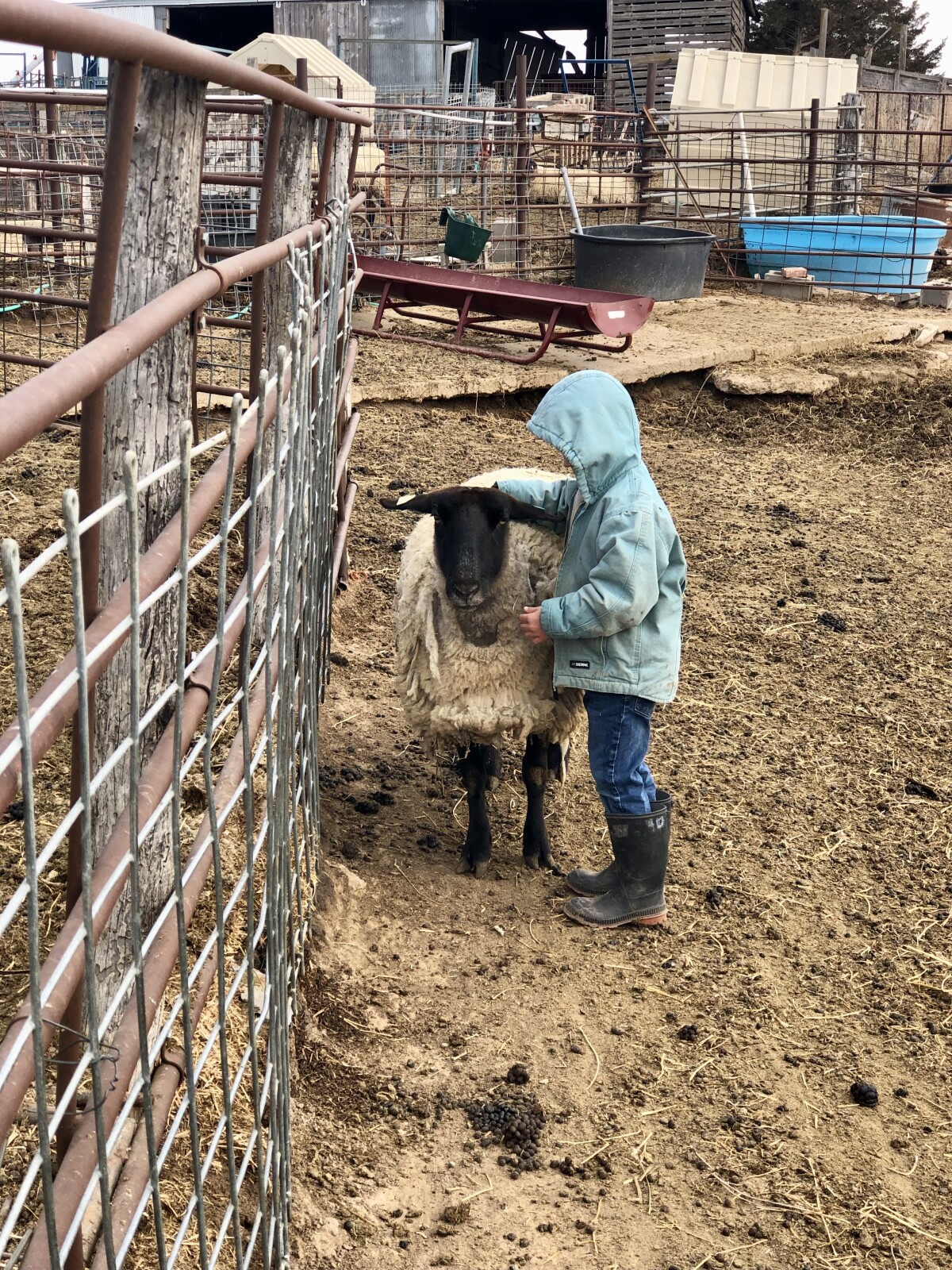
This post may contain affiliate links, which means that I may receive a commission if you make a purchase using these links, with NO additional cost to you.
Sheep are often seen as difficult and stubborn animals to take care of. But, in reality, they can be surprisingly simple to manage if you know the basics. The key is to pay close attention to health (more on that later). Whether you're looking for a small pen or want to let your sheep roam free on pasture land, there are certain necessities that will keep them happy, healthy and content. Read on to find out how to take care of your sheep like a pro!
Fencing for Your Sheep
The first thing you need is a sturdy fence for your sheep, whether it’s in a pasture or a small pen. Sheep have a knack for escaping any loose fence. If you’re using a confined pen, cattle panels are best because they provide a solid fence that is difficult for them to break, and usually can’t get their head stuck in, keeping them safe and secure. If you’re going with a pasture, woven wire works well but can be hard to tighten and maintain. You could also train your sheep to respect an electric fence - just make sure you have at least 5 strands running across the area, two or three of which should be hot. If your sheep escape, simply put them back in the pen and watch for about 10 minutes. They will usually go right back to where they got out and you can then fix it.
Food & Water Sources
Your sheep will need access to clean water - preferably from a tank no higher than 12 inches off the ground so they don’t have trouble reaching it. If they're out in pasture, grass will do fine; they’ll even prefer weeds over grass, so you can easily clean a weedy pasture up! If you keep them in a confined area, hay and grain should be provided at certain times during the year (more on that later).
Shelter and Protection
Sheep are very easy prey and need protection from predators. If your sheep are on pasture this could be a llama, donkey, livestock guardian dog, or a combination. Even in a confined fence, having a guard animal with them will help deter predators sneaking into the pens when you’re not around. When have a few pens that are difficult to seal up from the outside and are often targets for predators. We run a guard llama or donkey in those pens. I have a guardian dog for my bird flock, and will add another specifically for the sheep in the future. Additionally, make sure some form of shelter is available for lambing season so the mothers (and their offspring) can stay warm and dry when necessary.
As I've grown in my journey as an entrepreneur, mom, gardener, and livestock owner, I struggled to find a planner that met my needs and kept me organized. So I MADE MY OWN. You can take a look at it on the link blow and buy it on amazon below
Don't want the whole calendar part? I got you! I pulled the gardening and animal care pages out and put them in a book all their own.
Wanting a community to lean into? Join the FREE Helping Your Family Homestead for Food group! This community is for the Mommas, looking to stay home and raise their kids, but unsure how to keep everyone fed and make ends meet. I share tips from my journey from the office, to half the income and feeding my family from home, while maintaining good nourishing food. Tips include: gardening, bulk buying, caning,/preserving, livestock, homesteading, and home remedies. Your family is precious and this group is to help you gain the knowledge and tools to keep your family well and not reliant on outside professionals. Remedies and tips are easy and simple for the busy momma, time is precious after all, including pregnancy, birth, young kids, and illness. Trust your Momma gut again! This community offers the resources + community you need to help get started on your journey and prepare for whatever future you envision.
Starting to garden doesn't have to be hard! I gathered all the tips I've learned over my gardening learning curve and made them into a simple course to jump start your gardening your life.
Supporting Your Family Naturally From the Inside Out community!! This community is for the Mommas, looking to Support Your Family from Nature for Wellness. Tips range from nutrition, herbals, detoxing, natural cleaning, and essential oils. Basically all the things I’ve learned slowly over the past 5+ years if my journey. We have moved off Facebook, so to better serve our community and be able to discuss openly option for providing for your family in the best way possible.
Join the FREE Community
Join the FREE Community
I've had 3 very different pregnancies. After the first traumatic birth, I learned better and how to care for my body naturally and prevent common pregnancy and birth problems before they arise. This quick course will get you the tools you need to have a naturally healthy pregnancy, labor, and delivery. My first pregnancy I had a normal western medicine all the things pregnancy. My second? I flipped to completely natural, no medicine. Bonus: Preventing Preeclampsia Without the Aspirin & Healing from Birth Trauma
Click here to get the stories straight to your email:
For more on wellness tips click here:
For more on homesteading on your budget click here:
For more simple DIY updates click here:

